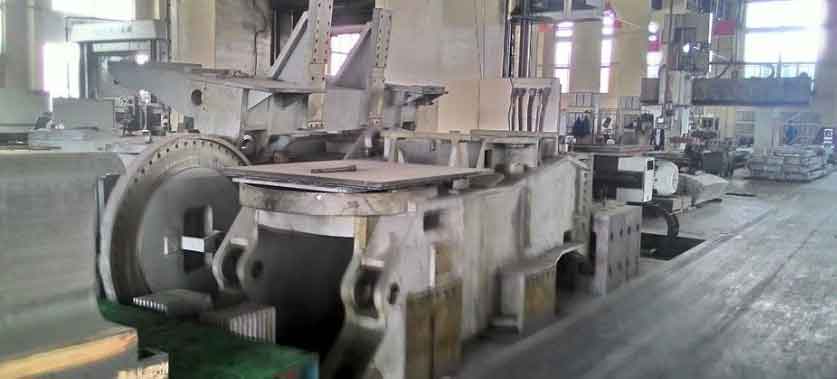Large steel castings not only offer advantages in terms of size and strength but also provide design freedom that allows for complex and innovative designs. Let’s explore how large steel castings unlock design freedom in various industries:

- Complex Geometries: Large steel castings enable the production of components with intricate and complex geometries that would be challenging or impossible to achieve with other manufacturing processes.
- Components with internal cavities, undercuts, and intricate shapes can be easily produced through casting, allowing for optimized designs and improved functionality.
- Complex cooling channels, ribs, and other internal features can be incorporated into castings to enhance heat transfer or structural integrity.
- Integration of Multiple Parts: Large steel castings allow for the integration of multiple parts into a single casting, reducing assembly and manufacturing complexity.
- By combining multiple components into a single casting, the number of joints, fasteners, and potential points of failure can be reduced, leading to improved structural integrity and reliability.
- Integration also simplifies manufacturing processes, reducing assembly time and costs.
- Customization and Tailored Solutions: Large steel castings offer high degrees of customization, allowing manufacturers to tailor components to specific applications and requirements.
- Through casting, it is possible to modify the alloy composition, adjust mechanical properties, and incorporate specific features to meet the performance demands of the application.
- Customization extends to surface finishes, coatings, and other post-casting treatments, enabling the desired aesthetics or functionality.
- Weight Optimization: Large steel castings offer opportunities for weight reduction while maintaining structural integrity.
- Designers can utilize optimized geometries, thin-walled sections, and ribbing to reduce weight without compromising strength and performance.
- By eliminating unnecessary material and employing structural optimization techniques, large steel castings contribute to lightweight designs, improving fuel efficiency and overall performance.
- Material Selection: Large steel castings allow for the utilization of a wide range of steel alloys with specific properties and characteristics.
- Different steel grades can be selected based on requirements such as strength, corrosion resistance, heat resistance, or wear resistance.
- Material selection can be tailored to the specific application, ensuring optimal performance and longevity.
- Prototyping and Rapid Iteration: Large steel castings enable rapid prototyping and iterative design improvements.
- By using casting for prototyping, designers can quickly evaluate and refine their designs before committing to expensive tooling or production processes.
- This iterative approach saves time and cost in the product development cycle, ensuring that the final design meets the desired performance and functionality.
The design freedom offered by large steel castings empowers engineers and designers to create innovative, optimized, and tailored solutions for various industries. The ability to produce complex geometries, integrate multiple parts, customize properties, optimize weight, and iterate designs contributes to improved performance, efficiency, and functionality of components. Large steel castings continue to be a versatile and valuable manufacturing technique, facilitating the realization of groundbreaking designs and engineering solutions.
